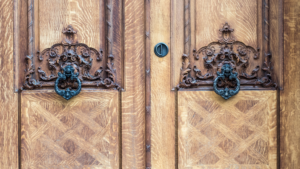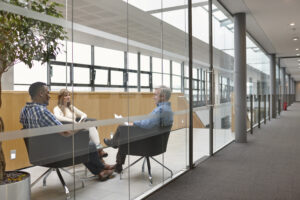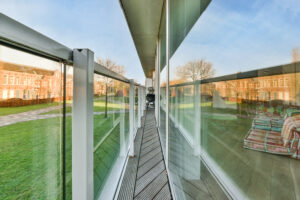When it comes to choosing windows for your home or construction project, the variety of materials and styles can seem overwhelming. One type of window that has gained popularity for its durability, low maintenance, and aesthetic appeal is the clad window. But what are clad windows exactly, and how do they differ from traditional wood or vinyl windows?
This article will explain everything you need to know about clad windows—their history, benefits, and types of materials available. Whether you’re looking to enhance your home or manage a large project, clad windows are a versatile option worth considering.
Understanding Clad Windows
Clad windows are essentially wood windows that are covered, or “clad,” on the exterior with a protective material, such as aluminum, vinyl, or fiberglass. This exterior cladding shields the wood from weather damage, eliminating the need for constant repainting or maintenance. While the inside of the window retains the natural beauty of wood, the outside has a more durable, weather-resistant covering.
Clad windows offer the warmth and aesthetic of wood on the inside while providing superior protection against the elements on the outside. This dual-layer construction is what makes clad windows a preferred option for many.
Types of Clad Windows
One of the main advantages of clad windows is the variety of materials available for the exterior cladding. The type of cladding you choose can affect the window’s durability, energy efficiency, and aesthetic appeal. Here are the most common types of clad windows:
Aluminum Clad Windows
Aluminum clad windows are among the most popular due to their strength and durability. The aluminum layer is lightweight, resists corrosion, and stands up to harsh weather conditions. They are also available in various colors, allowing for customization.
- Benefits: Durability, low maintenance, and a sleek, modern look.
- Drawbacks: Aluminum is a good conductor of heat, which may reduce energy efficiency if not properly insulated.
Vinyl Clad Windows
Vinyl-clad windows are a more affordable option. They provide a layer of protection resistant to warping, peeling, and cracking, making them ideal for regions with fluctuating temperatures.
- Benefits: Cost-effective, energy-efficient, and low-maintenance.
- Drawbacks: Some lower-quality vinyl may fade or warp over time in extreme temperatures.
Fiberglass Clad Windows
For those seeking the strongest, most durable option, fiberglass clad windows are the way to go. Fiberglass is resistant to extreme weather conditions and expands and contracts minimally with temperature changes, ensuring a tight seal over time.
- Benefits: High durability, excellent insulation, and minimal expansion and contraction.
- Drawbacks: Fiberglass clad windows can be more expensive than aluminum or vinyl options.
Benefits of Clad Windows
Clad window benefits are numerous, making them an attractive choice for homeowners and contractors alike. Below are some of the key advantages:
1. Low Maintenance
The primary appeal of clad windows is their low-maintenance exterior. Traditional wood windows require regular painting or staining to protect them from moisture and UV damage. With clad windows, the exterior material—whether aluminum, vinyl, or fiberglass—eliminates this need. A simple wash with soap and water is often all required to keep them looking new.
2. Energy Efficiency
Clad windows are typically more energy-efficient than their non-clad counterparts. The cladding materials add an extra layer of insulation, helping to reduce heat transfer and keep your home comfortable year-round. Many clad windows are available with energy-efficient glass, further enhancing their performance.
3. Durability
Whether you opt for aluminum vs vinyl clad windows or choose fiberglass vs aluminum clad windows, the exterior cladding provides an added layer of protection against the elements. The best clad window materials are resistant to corrosion, UV rays, and moisture, ensuring your windows last longer.
4. Aesthetic Appeal
Clad windows offer the best of both worlds when it comes to aesthetics. You get the beauty of natural wood on the inside, with the option to stain or paint it to match your interior décor. On the exterior, you can choose from a variety of colors and finishes to complement your home’s architectural style.
Maintenance and Longevity
Despite their low-maintenance nature, clad windows require occasional upkeep to ensure they remain in peak condition. Regular cleaning of the exterior cladding is usually sufficient, and any minor damage—like scratches or dents—should be addressed promptly to prevent further deterioration.
While fiberglass clad windows tend to be the most durable, both vinyl clad windows and aluminum clad windows are built to last, typically requiring replacement only after 20-30 years. The longevity of clad wood windows far surpasses that of standard wood windows, which may need frequent repairs if not properly maintained.
Why Clad Windows Are Worth Considering
Clad windows provide an excellent combination of durability, energy efficiency, and aesthetic flexibility. With options like aluminum clad windows, vinyl clad windows, and fiberglass clad windows, you can choose the material that best suits your needs and budget. Whether you’re looking for a low-maintenance solution or a durable option that will stand up to harsh weather, clad windows are an investment that can enhance the longevity and appearance of your home.
Connect with Your Neighborhood Tashman Team Today!
Choosing clad windows is key to enhancing the beauty and durability of your home. Clad windows offer the timeless look of wood with the added protection of low-maintenance exterior cladding, ensuring they stand up to the elements. Visit Tashman Home Center for high-quality clad window options and expert advice to guide you through your project. Let us help you elevate your property with windows that deliver both style and long-lasting performance.



